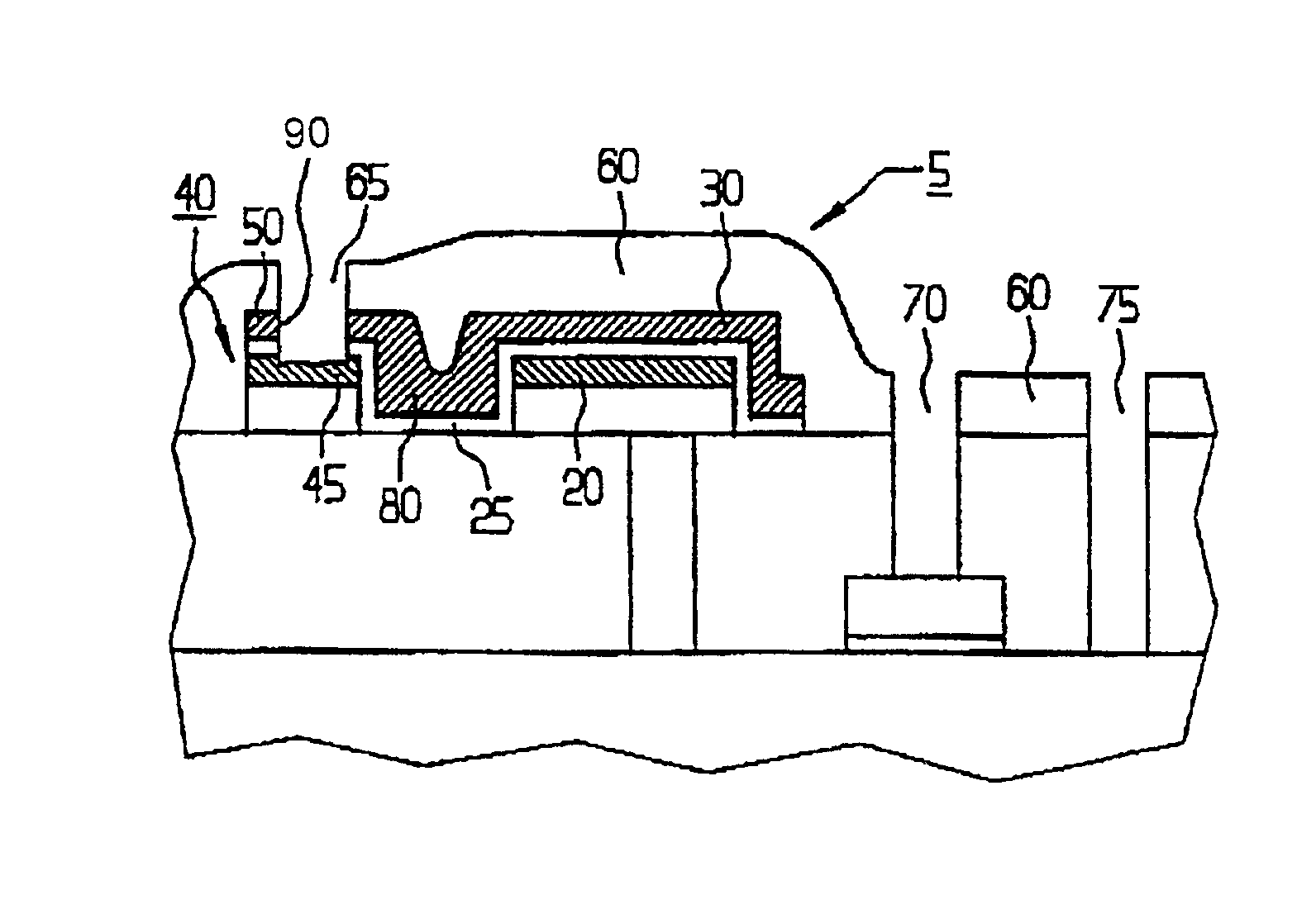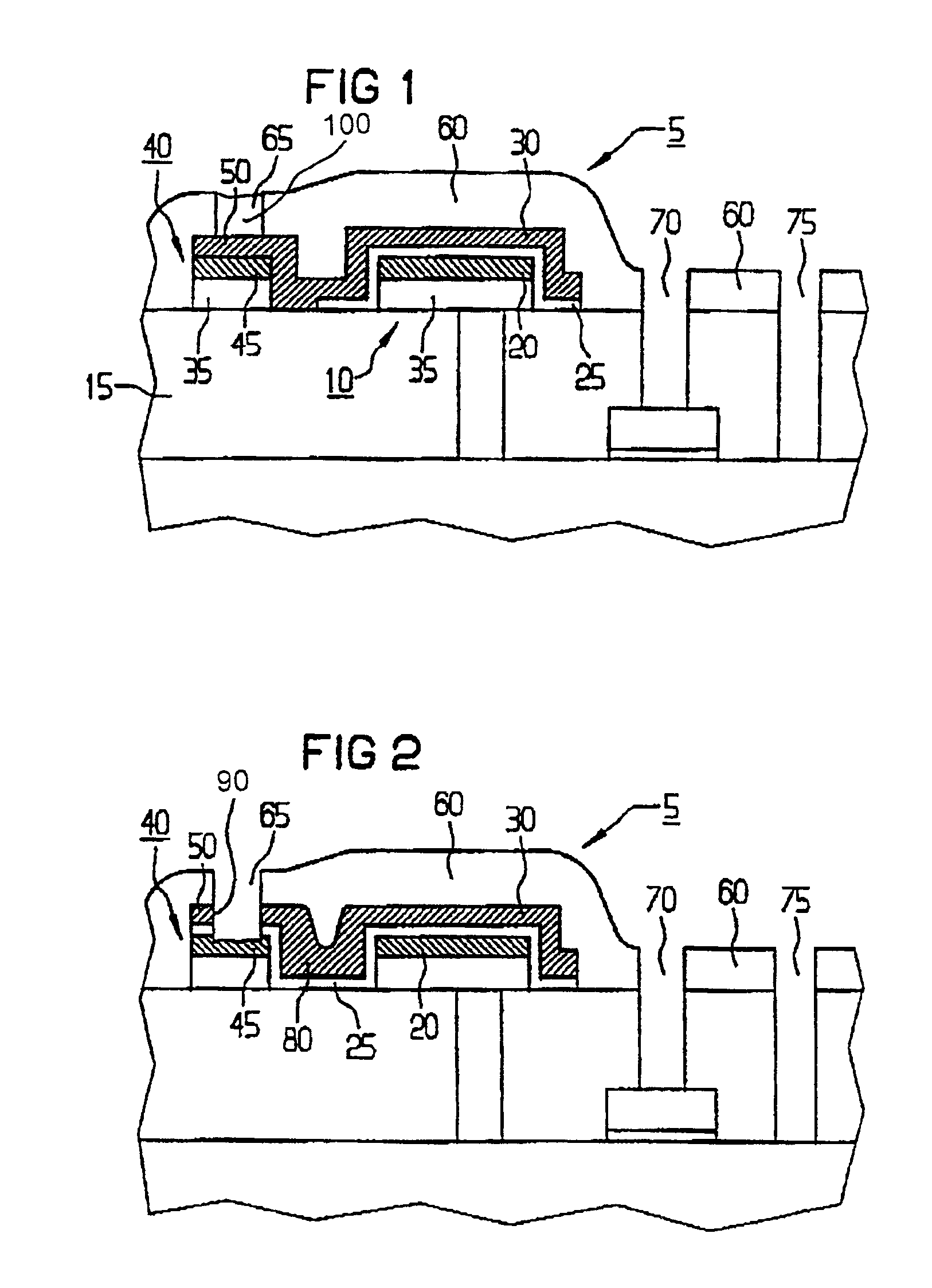Semiconductor component having a material reinforced contact area
a technology of contact area and semiconductor, applied in the direction of semiconductor devices, semiconductor/solid-state device details, electrical apparatus, etc., to achieve the effect of reducing cost and improving electrical contact characteristics
- Summary
- Abstract
- Description
- Claims
- Application Information
AI Technical Summary
Benefits of technology
Problems solved by technology
Method used
Image
Examples
Embodiment Construction
[0037]In all the figures of the drawing, sub-features and integral parts that correspond to one another bear the same reference symbol in each case. Referring now to the figures of the drawing in detail and first, particularly, to FIG. 1 thereof, there is shown a semiconductor component 5 with a memory cell 10. The memory cell 10 is disposed on an intermediate oxide 15 and is formed in layers from a first metal area 20, a dielectric layer 25 and a third metal area 30, with the two metal areas 20 and 30 representing the electrodes of the memory cell 10. The first metal area 20 is seated on a barrier layer 35 in order to prevent oxygen diffusion into the dielectric layer 25. A contact area 40 is disposed at the side adjacent to the memory cell 10, and is formed from a second metal area 45 and a fourth metal area 50, which makes direct contact with it. The third metal area 30 and the fourth metal area 50 are electrically connected to one another.
[0038]The memory cell 10 and the contact...
PUM
| Property | Measurement | Unit |
|---|---|---|
| dielectric constant | aaaaa | aaaaa |
| area | aaaaa | aaaaa |
| electrically | aaaaa | aaaaa |
Abstract
Description
Claims
Application Information
 Login to View More
Login to View More - R&D
- Intellectual Property
- Life Sciences
- Materials
- Tech Scout
- Unparalleled Data Quality
- Higher Quality Content
- 60% Fewer Hallucinations
Browse by: Latest US Patents, China's latest patents, Technical Efficacy Thesaurus, Application Domain, Technology Topic, Popular Technical Reports.
© 2025 PatSnap. All rights reserved.Legal|Privacy policy|Modern Slavery Act Transparency Statement|Sitemap|About US| Contact US: help@patsnap.com


